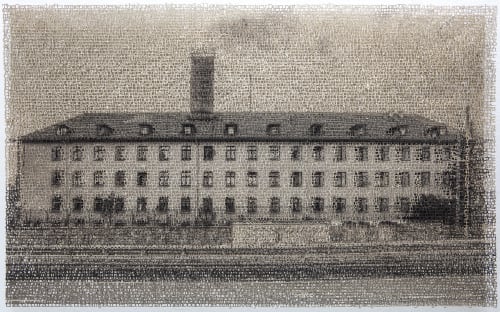Ideas of home and dislocation have always been compelling to me as the child of immigrant parents who arrived in the United States as refugees. Born in Latvia and Lithuania, my parents spent eight years after the end of World War II in displaced-person camps in Germany before they were allowed to emigrate to the United States. In this series, I set out to retrace and re- imagine that history.
My family’s displacement is part of a long history of uprooted peoples for whom the idea of “home” is undermined by political agendas beyond their control. My parents’ childhood homes were impersonal structures appropriated from other civilian and military uses to house thousands of postwar refugees. They had always described this housing as temporary, I never expected to see these buildings myself. But after intensive archival research, I was able to locate, visit, and photograph many of the actual buildings on the sites of former DP camps in Germany.
Today, the buildings give no hint of the tumultuous lives of the postwar refugees, stuck for years in limbo with no idea what the future held. To better understand and honor their struggles, I turned to archived copies of the plea letters the Baltic refugees sent to the governments of the United States, Canada, and the United Kingdom. Page after page, they beg for food, bedding, and medical supplies, and attempt to explain the dire fate that would await them if they were repatriated to the Soviet Union.
I merge these painful accounts with the photographs through a process of burning, an echo of the traumas of war the refugees had endured. The works are a merge of text and image, where the words of the refugees form the complete image.
Eventually made entirely of lace-like text, the images of buildings grow fragile, inseparable from the precarious lives they housed. Each of these layered pieces becomes a puzzle I am struggling to complete before the history is lost forever, a composite of my own experience and the fading memories of my parents and their generation. My goal is to give voice to this near forgotten history that also speaks to the impact of contemporary forced migrations.
In tandem with these laser cut images and research I have been traveling the United States and Canada interviewing and photographing former DP’s who were housed in these camps.

